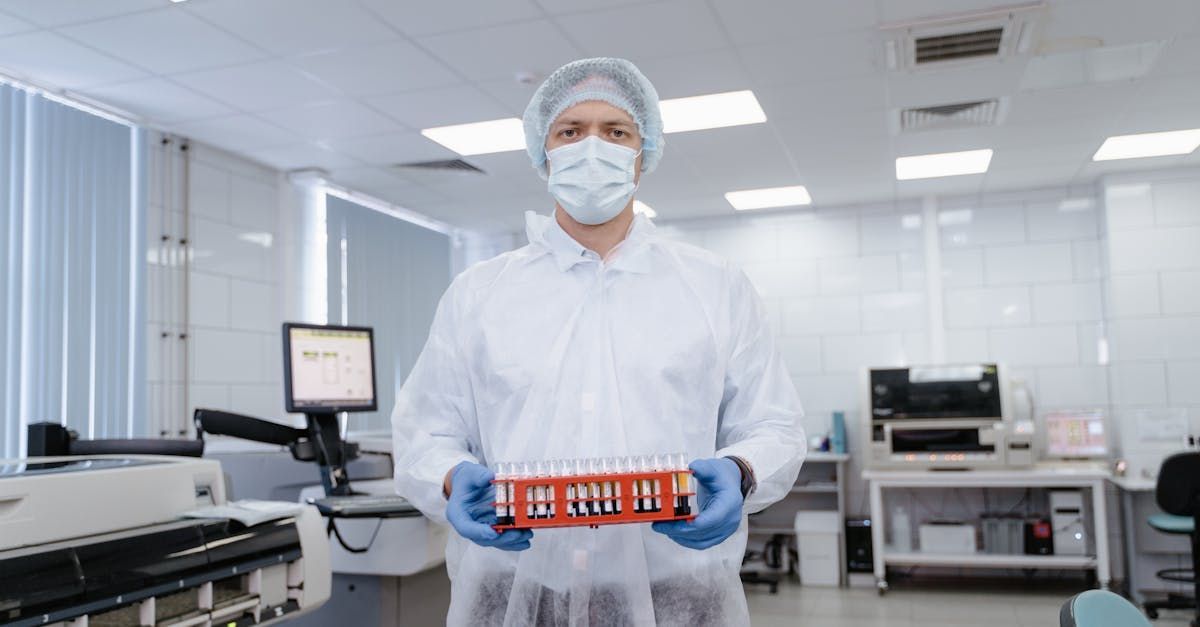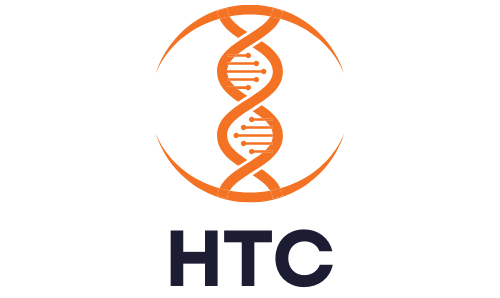Key Metrics for Evaluating HealthTech Investments
Investing in the HealthTech sector presents a unique set of opportunities and challenges. With rapid advancements in technology and increasing demand for innovative healthcare solutions, the potential for significant returns is substantial. However, the complexity and highly regulated nature of the healthcare industry mean that making informed investment decisions is crucial. Understanding the key metrics for evaluating HealthTech investments can help investors identify promising opportunities while mitigating risks.
In this blog, we will explore the essential metrics and criteria that investors should consider when evaluating potential HealthTech investments. From market potential and technological innovation to clinical validation and financial health, we will delve into the critical factors that can influence the success of a HealthTech venture. By focusing on these key areas, investors can make more strategic and informed decisions, ultimately driving growth and innovation in the HealthTech sector.
One of the first metrics to consider when evaluating a HealthTech investment is the market size and its growth rate. Understanding the current market size provides a baseline for assessing the potential impact of the technology or solution. A large and growing market suggests a higher potential for revenue and expansion. Investors should look for data on the market's current value and its projected growth over the next five to ten years.
HealthTech encompasses various segments, including telemedicine, digital health records, wearable devices, and more. Each segment may have different growth trajectories. For example, the global telemedicine market was valued at approximately $55.9 billion in 2020 and is projected to grow at a compound annual growth rate (CAGR) of 22.4% from 2021 to 2028. Such data highlights the significant growth potential within specific HealthTech segments.
Demographic and Epidemiological Trends
Demographic shifts and epidemiological trends also play a crucial role in shaping market potential. An aging population, for instance, increases the demand for healthcare services and technologies that cater to chronic conditions and age-related diseases. Similarly, the rising prevalence of chronic diseases like diabetes and heart disease drives the need for innovative health solutions. Understanding these trends can help investors identify which HealthTech innovations are likely to experience higher demand.
Target Audience
In addition to market size and growth, evaluating the target audience is vital for assessing the potential success of a HealthTech investment. A thorough analysis of the target customer base can provide insights into the adoption rates and overall market penetration potential of the technology.
Analysis of the Target Customer Base
The target audience for HealthTech products can vary widely, including individual consumers, healthcare providers, hospitals, and insurance companies. Understanding the specific needs and pain points of these groups is essential. For instance, wearable health devices might appeal more to tech-savvy younger consumers interested in fitness and wellness, while telemedicine solutions might be more relevant to older adults seeking convenient healthcare access.
Adoption Rates and Market Penetration
Adoption rates are a critical indicator of how quickly and widely a HealthTech solution is being embraced. Factors influencing adoption rates include the ease of use, cost, and perceived value of the technology. High adoption rates can signal strong market demand and a successful product-market fit. Additionally, assessing the current market penetration can provide insights into the untapped potential. For example, if a digital health solution has a low market penetration but a high adoption rate among early users, it may indicate significant growth opportunities.
In summary, evaluating the market potential through the lens of market size, growth rate, demographic and epidemiological trends, and target audience analysis provides a comprehensive understanding of the investment opportunity. By focusing on these metrics, investors can identify HealthTech innovations with substantial growth prospects and a solid foundation for success.
Innovation and Technology
A critical metric for evaluating HealthTech investments is the technological differentiation of the product or solution. Investors need to understand what sets the technology apart from existing solutions and how it leverages advancements to address specific healthcare challenges.
Unique Features and Technological Advancements:
Innovative HealthTech solutions often offer unique features that provide significant improvements over current technologies. These features could include advanced data analytics, AI-driven diagnostics, personalized treatment plans, or seamless integration with other healthcare systems. For example, a wearable device that not only tracks vital signs but also uses machine learning to predict potential health issues provides a clear technological advantage.
Investors should examine the core technology to determine its novelty and effectiveness. Is the technology truly groundbreaking, or is it a marginal improvement over existing solutions? The more distinctive and advanced the technology, the higher its potential to disrupt the market and attract users.
A thorough comparison with existing solutions is essential to gauge the competitive edge of the HealthTech innovation. Investors should analyze how the new technology improves upon current offerings in terms of functionality, usability, cost-efficiency, and patient outcomes. This involves looking at performance metrics, user feedback, and clinical validation studies.
For instance, a telemedicine platform with superior user interface design, enhanced security features, and lower latency can significantly outperform older systems, making it a more attractive option for both healthcare providers and patients. Understanding these differentiators helps investors assess the potential for the new technology to gain market share and achieve sustained success.
Strong intellectual property (IP) protection is a cornerstone of successful HealthTech investments. Patents and proprietary technologies can provide a competitive moat, safeguarding the innovation against replication and ensuring long-term value.
Investors should examine the breadth and depth of the company's patent portfolio. Are the patents robust, and do they cover critical aspects of the technology? A well-protected technology with multiple patents can deter competitors and create licensing opportunities, enhancing the overall investment appeal.
In addition to patents, proprietary technologies, such as unique algorithms, specialized software, or custom hardware designs, can also offer significant competitive advantages. These proprietary elements should be difficult to replicate and integral to the product’s performance and user experience.
Freedom to operate (FTO) is an important consideration when assessing IP. This involves determining whether the company can commercialize its technology without infringing on existing patents held by other entities. Conducting an FTO analysis helps identify potential legal challenges and reduce the risk of costly patent disputes.
Moreover, the potential for licensing can add significant value to a HealthTech investment. Technologies that can be licensed to other companies or adapted for various applications can generate additional revenue streams. For example, a diagnostic algorithm used in a particular medical device could be licensed for use in other types of devices or healthcare applications, expanding its market reach and profitability.
Evaluating technological differentiation and intellectual property provides crucial insights into the innovation’s market potential and defensibility. By focusing on unique features, technological advancements, robust patents, and freedom to operate, investors can identify HealthTech investments with strong competitive advantages and high growth potential.
Clinical and Regulatory Milestones
Clinical validation is a cornerstone of evaluating HealthTech investments. It provides evidence that a technology or solution is effective and safe for use, which is crucial for gaining the trust of healthcare providers, patients, and regulatory bodies.
Investors should look for comprehensive data from clinical trials demonstrating the efficacy and safety of the HealthTech innovation. Clinical trials should be well-designed, peer-reviewed, and conducted in accordance with rigorous standards. Positive results from these trials indicate that the technology can achieve its intended medical outcomes without causing harm to patients.
For example, a new medical device for monitoring cardiac health should show significant improvement in detecting heart conditions compared to existing methods, with minimal side effects. The more robust and compelling the clinical evidence, the more likely the technology will be adopted by the medical community and patients.
In addition to clinical trial data, peer-reviewed publications and endorsements from respected clinicians and medical organizations can significantly bolster the credibility of a HealthTech solution. Peer-reviewed studies published in reputable medical journals provide an additional layer of validation, as they have been scrutinized by experts in the field.
Clinical endorsements from key opinion leaders (KOLs) and endorsements from professional medical associations can further enhance the perceived value and trustworthiness of the technology. Such endorsements can also facilitate faster adoption and integration into standard medical practices.
Navigating the regulatory landscape is a critical aspect of bringing HealthTech innovations to market. Regulatory approvals are essential for ensuring that the technology meets safety and efficacy standards set by governing bodies.
Investors should assess the current status of the HealthTech product with major regulatory bodies, such as the U.S. Food and Drug Administration (FDA), the European Medicines Agency (EMA), and other relevant authorities. The regulatory status can significantly impact the timeline and feasibility of bringing the product to market.
For example, an FDA-approved medical device is more likely to gain market acceptance in the United States, while an EMA approval is crucial for European markets. Understanding the specific regulatory requirements and the product’s compliance status helps in evaluating the readiness and market entry potential of the technology.
The timeline for obtaining regulatory approvals is another critical factor. Investors should consider how long it will take for the product to receive the necessary approvals and what the associated risks are. Regulatory processes can be lengthy and complex, often involving multiple stages of review and additional clinical trials.
Delays in regulatory approvals can affect the product’s time-to-market and overall investment timeline. It is essential to evaluate the company’s regulatory strategy, including contingency plans for potential setbacks. Understanding these timelines and risks allows investors to make more informed decisions and manage expectations regarding the investment’s return on investment (ROI).
Business Model and Revenue Streams
Understanding the business model is essential for evaluating the long-term viability and growth potential of a HealthTech investment. A well-defined business model outlines how the company plans to generate revenue, attract customers, and sustain its operations.
Description of the Business Model (B2B, B2C, Subscription, etc.):
HealthTech companies can adopt various business models depending on their target market and product offering. Common models include:
- Business-to-Business (B2B): Solutions are sold directly to healthcare providers, hospitals, clinics, or insurance companies. For example, an electronic health records (EHR) system might be marketed to large hospital networks.
- Business-to-Consumer (B2C): Products are sold directly to individual consumers. This model is typical for wearable health devices, mobile health apps, and telemedicine services.
- Subscription-Based: Customers pay a recurring fee for ongoing access to the service or product. Subscription models are prevalent in digital health platforms and software as a service (SaaS) offerings.
- Pay-per-Use: Customers are charged based on usage, common in telehealth consultations and diagnostic services.
- Hybrid Models: Combining elements of multiple business models to diversify revenue streams and reach a broader audience.
Scalability is a crucial aspect of the business model. Investors should assess whether the company can scale its operations efficiently as demand grows. A scalable business model allows for expansion without a proportional increase in costs, leading to higher profit margins.
Sustainability, on the other hand, involves the ability of the business to maintain its operations and growth over the long term. This includes factors such as market demand, competitive advantage, operational efficiency, and financial health. A sustainable business model ensures that the company can weather market fluctuations and continue to provide value to its customers.
Identifying and analyzing the revenue streams of a HealthTech company provides insights into its financial health and growth potential. A diversified revenue base can help mitigate risks and ensure a steady flow of income.
Current revenue sources indicate how the company is generating income today. These could include:
- Product Sales: Direct sales of medical devices, software, or other health technologies.
- Service Fees: Charges for services such as telemedicine consultations, health monitoring, and data analytics.
- Licensing Fees: Income from licensing proprietary technology or intellectual property to other companies.
- Partnerships and Collaborations: Revenue from strategic partnerships, research collaborations, and joint ventures.
Potential revenue sources represent future opportunities that the company can tap into as it grows. These might involve expanding into new markets, launching additional products or services, or exploring new business models.
The pricing strategy is a critical determinant of the company’s revenue potential. Investors should evaluate whether the pricing is competitive and reflects the value provided by the product or service. A well-defined pricing strategy can enhance market penetration and customer retention.
Reimbursement is another crucial factor, particularly in the healthcare sector where many products and services rely on insurance coverage. Investors should examine the reimbursement landscape to understand how the product fits into existing insurance frameworks and whether there are barriers to obtaining coverage. For instance, products that are easily reimbursed by Medicare or private insurers are likely to see higher adoption rates.
Financial Health and Projections
A thorough understanding of a HealthTech company's current financial status is critical for evaluating its stability and capacity for growth. Key elements to examine include the balance sheet, cash flow, profitability, burn rate, and funding history.
The balance sheet provides a snapshot of the company's financial health, detailing its assets, liabilities, and shareholders' equity. Key indicators to look for include a strong asset base, manageable debt levels, and positive equity, which together signal financial stability.
Cash flow analysis reveals how well the company manages its cash, highlighting the inflow and outflow of funds. Positive cash flow from operating activities indicates that the company generates enough revenue to cover its expenses, a crucial factor for sustainability.
Profitability metrics, such as net income, gross profit margin, and operating profit margin, provide insights into the company’s ability to generate profit from its operations. Consistent profitability is a strong indicator of a company's viability and growth potential.
The burn rate measures how quickly a company is spending its cash reserves. A high burn rate without corresponding revenue growth can be a red flag, indicating potential cash flow problems. Conversely, a controlled burn rate suggests prudent financial management.
Examining the funding history helps investors understand how the company has financed its operations and growth. This includes past funding rounds, the amount raised, and the types of investors involved. A strong funding history with reputable investors can enhance confidence in the company’s prospects.
Future financial projections provide a forward-looking view of the company's potential for growth and profitability. These projections should be based on realistic assumptions and comprehensive market analysis.
Revenue projections estimate the company’s future sales, taking into account market trends, competitive positioning, and planned product launches. Accurate revenue forecasts are essential for assessing growth potential and setting expectations for investors.
Profit projections, including estimates of gross profit, operating profit, and net income, help investors understand the company’s future profitability. These projections should consider cost structures, pricing strategies, and anticipated economies of scale.
A break-even analysis determines when the company is expected to become profitable by comparing projected revenues with total costs. This analysis helps investors gauge the time frame required for the company to cover its initial investments and begin generating profit.
Return on investment (ROI) expectations provide insights into the potential financial returns for investors. ROI calculations should consider both the magnitude and timing of expected returns. A high ROI indicates a potentially lucrative investment, while a realistic timeline for achieving these returns helps manage investor expectations.
Evaluating Financial Health and Strategic Positioning: A Case Study of Notable Labs
A model example would be Notable Labs, which is currently in a transformative phase following its recent merger with VBL Therapeutics. This strategic merger, completed in October 2023, has significantly impacted its financial and operational structure. The combined company, now trading under the ticker symbol "NTBL" on the Nasdaq Capital Market, has issued approximately 8.9 million shares. The merger was accompanied by a one-for-35 reverse share split to consolidate its stock, reflecting a strategic move to enhance its market position and shareholder value.
Financially, Notable Labs reported total net revenue of $0.3 million for the year ending December 31, 2023, primarily from its diagnostic services. Despite the modest revenue, the merger and strategic realignments have positioned Notable Labs for potential growth, leveraging its Predictive Precision Medicines Platform (PPMP). This platform is designed to bio-simulate patient responses to cancer treatments, aiming to streamline and de-risk the drug development process.
Looking ahead, Notable Labs is focused on advancing its lead asset, Volasertib, with Phase 2a results expected in the third quarter of 2024. The company's integration with VBL and its innovative platform underline its commitment to revolutionizing cancer treatment and enhancing its financial standing through strategic partnerships and technological advancements.
Competitive Landscape
Key Competitors and Market Positioning:
Identifying the key competitors in the market is the first step. These could be direct competitors offering similar products or services, or indirect competitors providing alternative solutions to the same problem. Understanding who these competitors are and their market share provides context for evaluating the company’s competitive positioning.
Market positioning involves assessing how the company differentiates itself from its competitors. This could be through superior technology, better customer service, more effective marketing, or a unique business model. Investors should look for companies that have a clear and compelling value proposition that sets them apart from the competition.
A SWOT analysis provides a structured approach to evaluating the company’s internal strengths and weaknesses, as well as external opportunities and threats:
- Strengths: These are internal attributes that give the company an advantage over competitors, such as proprietary technology, strong brand reputation, or a robust sales network.
- Weaknesses: Internal factors that could hinder the company’s performance, such as limited financial resources, lack of regulatory approvals, or a narrow product range.
- Opportunities: External factors that the company can leverage to grow, such as emerging market trends, advancements in technology, or favorable regulatory changes.
- Threats: External challenges that could impact the company’s success, including intense competition, regulatory hurdles, or economic downturns.
Conducting a SWOT analysis helps investors understand the company’s strategic position and its potential to navigate the competitive landscape effectively.
Barriers to entry play a critical role in determining the competitive dynamics of the HealthTech market. High entry barriers can protect established companies from new entrants, ensuring a more stable competitive environment.
Analysis of Entry Barriers for New Competitors:
Barriers to entry can include:
- Regulatory Hurdles: HealthTech companies often face stringent regulatory requirements for product approvals, which can be time-consuming and costly. These regulations create a significant barrier for new entrants who may lack the resources or expertise to navigate the regulatory landscape.
- High R&D Costs: Developing innovative HealthTech solutions typically involves substantial research and development (R&D) investments. Established companies with significant R&D budgets and existing infrastructure have an advantage over new entrants.
- Intellectual Property: Strong IP portfolios, including patents and proprietary technologies, can prevent new competitors from easily replicating successful products.
- Brand Loyalty and Reputation: Companies with a well-established brand and a strong reputation in the market can benefit from customer loyalty, making it difficult for new entrants to gain traction.
Strategies for Maintaining Competitive Advantage:
To sustain a competitive edge, HealthTech companies need to continually innovate and adapt to changing market conditions. Strategies to maintain competitive advantage include:
- Continuous Innovation: Investing in ongoing R&D to develop new products and improve existing ones helps maintain technological leadership.
- Strategic Partnerships: Collaborating with other companies, research institutions, and healthcare providers can enhance product offerings and market reach.
- Customer Focus: Building strong relationships with customers through exceptional service, effective communication, and user-friendly products can foster loyalty and drive repeat business.
- Market Intelligence: Staying informed about industry trends, competitor activities, and regulatory changes enables proactive strategy adjustments and informed decision-making.
Management Team and Governance
The management team is a critical factor in the success of any HealthTech investment. The experience, expertise, and track record of the leadership team can significantly impact the company’s ability to execute its strategy, navigate challenges, and drive growth.
A strong management team typically comprises individuals with diverse backgrounds and deep expertise in relevant fields. Key areas of experience to look for include:
- Healthcare Industry Knowledge: Understanding the complexities of the healthcare industry, including regulatory requirements, market dynamics, and patient needs.
- Technical Expertise: Proficiency in the specific technologies underpinning the company’s products, such as software development, biomedical engineering, or data analytics.
- Business Acumen: Skills in business development, finance, marketing, and operations to drive the company’s growth and profitability.
Investors should assess whether the management team has the right mix of skills and experience to execute the company’s vision effectively. A team with a proven track record in similar roles or successful ventures within the HealthTech sector is particularly valuable.
Evaluating the track record of the leadership team provides insights into their ability to deliver results. Key indicators of success include:
- Previous Ventures: Successful exits, such as IPOs or acquisitions, can signal a management team’s ability to create and grow valuable companies.
- Industry Recognition: Awards, patents, publications, and speaking engagements at industry conferences can highlight the team’s thought leadership and expertise.
- Operational Milestones: Achievements such as securing major partnerships, regulatory approvals, or significant market penetration demonstrate the team’s capability to execute its business plan.
Effective corporate governance is essential for ensuring that the company operates transparently, ethically, and in the best interests of its stakeholders. Good governance practices can enhance investor confidence and support long-term success.
The structure of the company’s governance framework includes the policies, procedures, and practices that guide its operations. Effective governance typically involves:
- Clear Roles and Responsibilities: Well-defined roles for the board of directors, executive team, and management, ensuring accountability and efficient decision-making.
- Internal Controls: Robust internal controls and risk management processes to safeguard assets, ensure compliance, and mitigate risks.
- Transparency and Reporting: Regular and transparent reporting of financial performance, strategic initiatives, and operational updates to stakeholders.
Assessing the effectiveness of the company’s governance framework involves reviewing its corporate policies, compliance with regulatory requirements, and the quality of its reporting and disclosure practices.
The composition of the board of directors and advisory boards plays a crucial role in guiding the company’s strategic direction and oversight. Key aspects to consider include:
- Board Diversity: A diverse board with members from various backgrounds and areas of expertise can provide a broader range of perspectives and insights.
- Independence: Independent directors who are not part of the executive team can offer unbiased oversight and enhance the board’s objectivity.
- Relevant Expertise: Board members with experience in healthcare, technology, finance, and business development can provide valuable guidance and support to the management team.
Advisory boards, comprising industry experts and thought leaders, can also add significant value. These advisors can offer strategic advice, open doors to key partnerships, and help navigate regulatory and market challenges.
Risk Assessment
1. Operational Risks
Operational risks pertain to the internal processes and resources that a HealthTech company relies on to deliver its products and services. Identifying and mitigating these risks is crucial for maintaining smooth operations and ensuring the company can meet its strategic objectives.
HealthTech companies often depend on complex supply chains for manufacturing and distributing their products. These dependencies can pose significant risks, including:
- Supply Chain Disruptions: Interruptions in the supply chain due to geopolitical issues, natural disasters, or supplier bankruptcies can delay production and delivery of products.
- Quality Control: Ensuring that all components meet stringent quality standards is vital, especially in the healthcare sector where product reliability and safety are paramount.
- Scalability Issues: As the company grows, scaling operations to meet increased demand can present logistical and management challenges.
Investors should assess the company’s supply chain management practices, contingency plans for disruptions, and the robustness of its operational processes to handle growth and maintain quality.
2. Market Risks
Market risks involve external factors that can affect the demand for a company’s products or services. Understanding these risks helps investors gauge the stability and growth potential of the HealthTech investment.
The HealthTech market can be highly volatile, influenced by rapid technological advancements, changing consumer preferences, and competitive dynamics. Key market risks include:
- Technological Obsolescence: Rapid innovation can render existing technologies obsolete, requiring continuous R&D investment to stay competitive.
- Changing Consumer Preferences: Shifts in patient and provider preferences can impact the demand for specific HealthTech solutions.
- Competitive Pressures: New entrants and existing competitors can affect market share and pricing power, making it essential to maintain a competitive edge through innovation and customer satisfaction.
Investors should evaluate the company’s ability to adapt to market changes, its competitive positioning, and strategies for maintaining market relevance.
3. Regulatory Risks
Regulatory risks are particularly significant in the HealthTech sector due to the stringent requirements for product approval and compliance with healthcare regulations.
Regulatory environments can change, introducing new compliance requirements or altering the approval process for HealthTech products. Key regulatory risks include:
- Regulatory Delays: Extended timelines for obtaining regulatory approvals can delay market entry and revenue generation.
- Compliance Costs: Meeting regulatory standards can be costly, impacting the company’s financial performance.
- Policy Changes: Shifts in healthcare policy, such as changes in reimbursement rules or data privacy laws, can affect the company’s operations and market potential.
Investors should assess the company’s regulatory strategy, its track record of obtaining approvals, and its preparedness for potential regulatory changes.
4. Financial Risks
Financial risks involve factors that can impact the company’s financial stability and its ability to secure necessary funding for growth and operations.
HealthTech companies often require significant investment to develop, validate, and commercialize their technologies. Key financial risks include:
- Funding Gaps: Insufficient capital to support ongoing operations and R&D efforts can hinder growth and delay product development.
- Burn Rate: A high burn rate without corresponding revenue growth can deplete cash reserves quickly, necessitating additional funding rounds.
- Financial Sustainability: The company’s ability to achieve and maintain profitability is crucial for long-term viability. This includes managing costs, optimizing pricing strategies, and ensuring steady revenue streams.
Investors should review the company’s financial statements, funding history, and financial projections to assess its financial health and sustainability. Evaluating the burn rate, cash flow management, and potential for future funding rounds can provide insights into the company’s ability to navigate financial challenges and achieve long-term success.
Recap of Essential Metrics and Their Importance
Investing in the HealthTech sector requires a thorough evaluation of various metrics to ensure informed decision-making and the potential for long-term success. The essential metrics include:
- Market Potential: Assessing the market size, growth rate, and target audience helps investors understand the demand for the HealthTech solution and its scalability.
- Technological Differentiation: Evaluating the unique features, technological advancements, and intellectual property protection of the product ensures it has a competitive edge and is difficult to replicate.
- Clinical and Regulatory Milestones: Reviewing clinical validation, evidence of efficacy and safety, and regulatory approval status is crucial for determining the product’s credibility and market readiness.
- Business Model and Revenue Streams: Analyzing the business model, revenue sources, pricing strategy, and reimbursement landscape provides insights into the company’s financial viability and growth potential.
- Financial Health and Projections: Examining the balance sheet, cash flow, profitability, burn rate, funding history, and future financial projections helps assess the company’s financial stability and sustainability.
- Competitive Landscape: Conducting a competitor analysis and SWOT analysis helps identify the company’s strengths, weaknesses, opportunities, and threats, while understanding barriers to entry and strategies for maintaining a competitive advantage.
- Management Team and Governance: Evaluating the experience and expertise of the management team, their track record, and the effectiveness of corporate governance ensures strong leadership and sound decision-making.
- Risk Assessment: Identifying operational, market, regulatory, and financial risks provides a comprehensive understanding of potential challenges and helps develop strategies to mitigate them.
Investing in HealthTech is a complex and dynamic process that requires a holistic evaluation of various metrics. Each metric provides a piece of the puzzle, contributing to a comprehensive understanding of the investment’s potential. It is crucial for investors to stay informed and vigilant, continuously monitoring market trends, technological advancements, and regulatory changes. By focusing on these key metrics, investors can make more strategic and informed decisions, ultimately driving growth and innovation in the HealthTech sector.
To further enhance your understanding and make more informed investment decisions, consider engaging with HealthTech investment experts. Join discussions, attend industry conferences, and participate in webinars to stay updated on the latest trends and insights.
We invite you to join our upcoming discussions and webinars with leading HealthTech investment experts. These sessions will provide valuable insights, share real-world experiences, and offer guidance on navigating the complexities of HealthTech investments. Stay connected with industry leaders and continuously expand your knowledge to make the most of your investment opportunities in the ever-evolving HealthTech landscape.
By staying engaged and informed, you can contribute to the advancement of healthcare technology and make impactful investments that drive innovation and improve patient outcomes.










